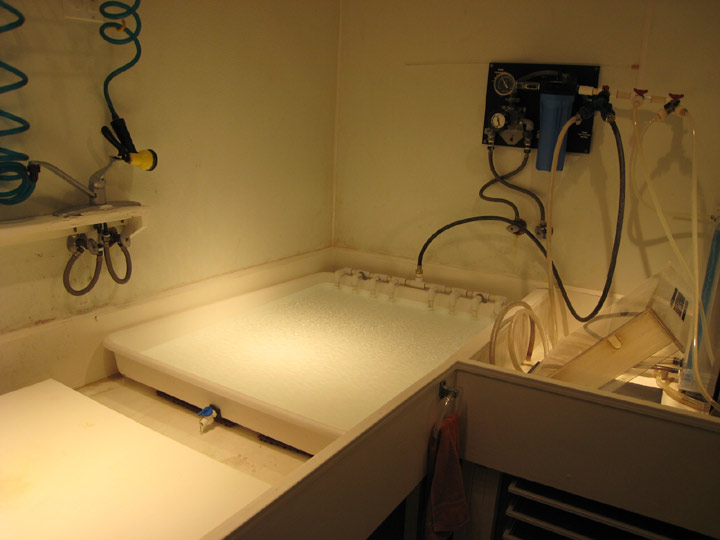Kirk, good question. My typical printing session starts early morning, so at the end of the session I have a six or eight hour head start on the soak process and control over the temperature. I dump periodically through the day and then continue soaking through the night. The night soak starts at 75 degrees and is rarely below 60 degrees by morning (my darkroom is small and well insulated). I have gone as long as 36 hour soaks without adverse effect, but only for convenience not necessity. Soaking is really the key to shortened wash times.
Your earlier post about less use of water and increased charges really hits home here as we enter a drought year. My darkroom wash water bypasses the city sewer and is saved for landscape use. I have become very water conscious in my old age!




 Reply With Quote
Reply With Quote
 ). The gelatin was so fragile I couldn't help but damage it.
). The gelatin was so fragile I couldn't help but damage it.





Bookmarks